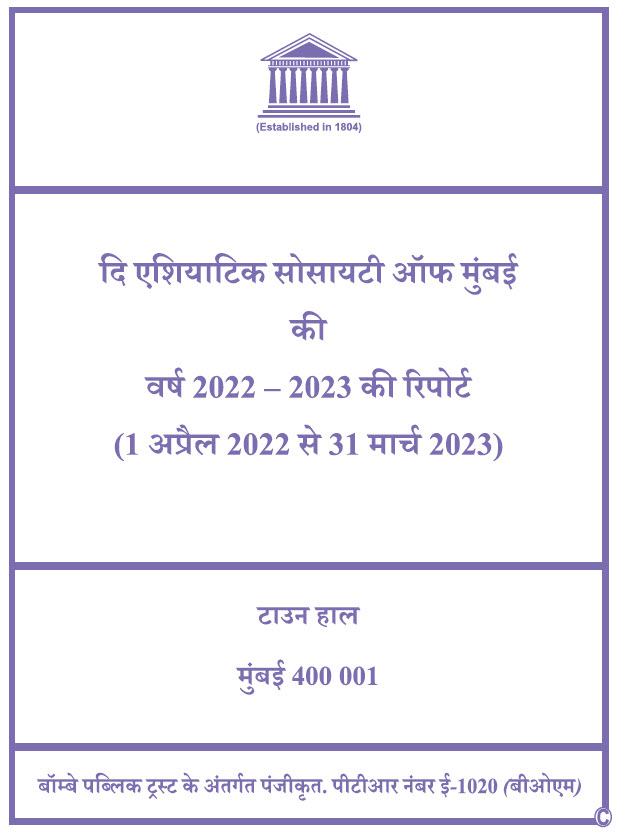 The Asiatic Society of Mumbai
The Asiatic Society of Mumbai
Mumbai Research Centre
Curated walk through Fort, mapping the old fort, with Raamesh Gowri Raghavan.
Sunday 6th November 2022 from 4.30 to 6.30 p.m.
The Mumbai Research Centre of the Asiatic Society of Mumbai presents a specially curated walk through Fort, mapping the old fort, with Raamesh Gowri Raghavan.
The Fort precinct of Mumbai was once a real fort, bristling with bastions and cannons. This walk will map the old curtain walls and gates as they stood. The fort had rather humble beginnings in 1665, as defences around the old manor house of Garcia d'Orta. 20 guns secured the settlement from the Dutch and the Marathas. In 1715, after multiple struggles with the company bosses in London and Calcutta for permission to spend on further fortifications, governor Charles Boone was able to begin the construction of a larger curtain wall with twelve bastions and three gates - the Bazaar Gate, the Church gate and the Apollo gate (between St.Andrew’s Church and Rampart Row). It was finished in 1722, with further defences added in the next 30 years in fits and starts, including the infamous choleric ditch.
The fort oversaw a deforested Esplanade, which was often the site of camp accommodation during the oppressive summers (for the Europeans). In 1862, as the population (beset with overcrowding, fires and cholera) expanded, and the threats from the Dutch, Siddis and Marathas had faded away, there was clamour for removing the ramparts. The Governor Sir Bartle Frere oversaw the rampart removal, and the transformation of the space created into the new 'Frere Town'.
Date: Sunday, 6th November 2022
Time: 4.30 to 6.30 pm
Venue: Fort (CSMT to Gateway and back)
(Exact assembly spot will be communicated in the dedicated WhatsApp group.)
Raamesh Gowri Raghavan takes an interest in the ethnoarchaeology of the Bene Israel; ancient board games, the archaeology of ballistic weapons and fortifications, ancient Indian trade and Shaiva iconography. He has taught epigraphy, linguistics, archaeozoology, palaeobotany, evolutionary biology, Dravidian linguistics and haikai at University of Mumbai CEMS, Sathaye College, Wilson College, INSTUCEN Trust, Mumbai Research Centre of the Asiatic Society of Mumbai, and Speaking Archaeologically.
For members: https://rzp.io/l/ForMem
For others: https://rzp.io/l/ForGen
- Prof. Mangala Sirdeshpande , Hon. Secretary
- Dr. Shehernaz Nalwalla, Chairperson, Mumbai Research Centre
Release of ASM Journal Volume 91
We are happy to share with you that on 25th November 2023, on the occasion of the Foundation Day of the Asiatic, the Society has released Volume 91 of the ASM Journal. It has come to the Society's notice that some unscrupulous elements are collecting money for publishing papers in the Society's Journal and offering bogus certificates. The Asiatic Society does not collect money for publishing in its journal, nor does it guarantee publication, and neither does it issue any certificate. Authors must verify with the Society before submitting any papers, and papers will be published only after rigorous peer review and editing. The Society does not take responsibility for any payments made to third parties claiming to represent the Society, or for their papers appearing in a cloned/spam journal. Ours is a print-only journal.



















